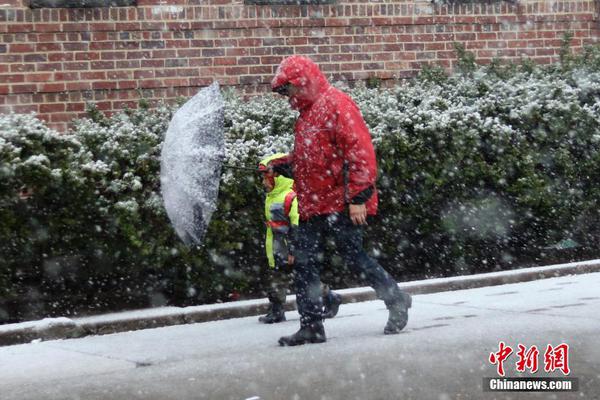【how much is a 1864 confederate $5 bill worth】Insurance Did Not Cover Damage To Salon From 200-To-500 Year Storm
This how much is a 1864 confederate bill worthstory is reprinted with permission from
FC&S Legal

, the industry’s only comprehensive digital resource designed for insurance coverage law professionals.

Visit the website to subscribe

.
A federal district court in New Jersey has ruled that an insurance company had no obligation to cover damage to a salon resulting from a thunderstorm in Princeton that dropped between five and seven inches of rain in two hours.
The Case
On July 30, 2016, a severe thunderstorm, estimated to constitute a 200-to-500 year storm, resulted in approximately five to seven inches of rain falling within two hours in Princeton, New Jersey. As a consequence, water pooled at the bottom of the stairwell next to a beauty salon’s lower floor entrance, which was below street level. The salon was accessible through a glass door entrance.
Water leaked through the glass door, damaging the building.
On the day after the storm, Tere Villamil telephoned her insurance carrier, Sentinel Insurance Company, Limited, to report an insurance claim and provided the following explanation to a representative:
This is Christina, how may I help you?
Tere Villamil: Hi, yes, this is Tere Villamil, I’m calling from La Jolie Salon & Spa in Princeton, uh, we have had a flood in our lower level yesterday that was quite awful, actually. I’ll send you a video. Um, and the first floor was damaged of the business and I need to put in a claim. I also put in a claim with the landlord as well.
Christina: New Jersey, ok. And when did this flood happen?
Tere Villamil: Yesterday. Uh, we were there the entire day trying to clean it all up. I sent the email and a notice to my agent, but I was in the middle of cleaning so I never called you. I called the landlord first.
Christina: Oh, okay.
Tere Villamil: Yesterday’s um extreme rain that we got in two hours that was incredible.
Christina: Ok, thank you very much. And you said it was uh a flooding, correct?
Tere Villamil: Yes, uh, the water came in within 15 minutes, the water came in and flooded the entire lower level.
Christina: Oh, that’s quite a bit, ok.
Tere Villamil: Yeah. It came through the door, it seeped right through the door. And if you could provide me with an email, I have videos and pictures of the entire incident.
Christina: Ok, and just uh, and just to check, I’m so sorry, did you have a separate flood insurance as well?
Tere Villamil: Uh, I don’t believe so because we never had a flood there. So, I don’t know if the landlord does, but, I don’t have any flood insurance.
Sentinel denied the salon’s insurance claim, reasoning “that the cause of loss was a flood,” which was not covered under the policy or the modification agreement to the policy.
Ms. Villamil sued Sentinel, which moved for summary judgment. The insurer argued that heavy rain flooded areas in Princeton, including where the salon was located. It contended that the flood water flowed over the curb and accumulated at the bottom of the stairwell that led to the lower level, prior to entering the building through the glass door, notwithstanding the salon’s efforts to block it with partially filled garbage bags from inside the building.
On the other hand, the salon contended that the water that entered through the lower level of the building did not constitute flood water. Rather, the salon maintained that as a consequence of the storm, water accumulated on the building’s roof and, in turn, entered the building’s drain system. The high volume of water that entered the building’s drain system created an “over-pressurization” and, as a consequence, that water was “ejected” through the salon’s numerous sinks and through the salon’s toilets and drains.
According to the salon, that water also, as opposed to the flood water from the street, accumulated at the bottom of the salon’s stairwell, entered the building, and caused the damage.
The Sentinel Policy
The Sentinel policy excluded coverage for damage or loss arising from:
flood, including the accumulation of surface water
An agreement that modified the policy provided:
The following Additional Coverage is added:
We will pay for direct loss of or physical damage to Covered Property solely caused by water that backs up from a sewer or drain. This coverage is included within the Covered Property Limits of Insurance.
THIS IS NOT FLOOD INSURANCE
We will not pay for water or other materials that back up from any sewer or drain when it is caused by any flood. This applies regardless of the proximity of the flood to Covered Property. Flood includes the accumulation of surface water, waves, tides, tidal waves, overflow of steams or other bodies of water, or their spray, all whether driven by wind or not that enters the sewer drain system.
The District Court’s Decision
The district court granted Sentinel’s motion.
In its decision, the district court explained that, for there to be coverage, the salon had to show that it had sustained damage “
solely
” from water that backed up from a sewer or drain. Stated differently, the district court continued, the salon had to demonstrated that flood water had not, in any way, contributed to the damages that the building had sustained.
The district court then ruled that the expert opinions relied on by the salon did “not refute that the water which accumulated at the bottom of the stairwell, at a minimum, included surface water which subsequently entered the premises through the salon’s glass door.”
The district court pointed out that an expert for the salon provided an opinion as to the cause of the water damage in a three-sentence email that stated:
Story continues
Based on my inspection of the site on August 10, 2016, and the pictures you showed me it appears that the water damage in your building was not created by flooding from the street. From what you described the floor drain in your exterior stairwell appears to have failed causing water to backup into your building. Should you have any questions do not hesitate to call.
The district court added that, in a deposition, this expert explained the opinion that he rendered in his email:
Q: Okay. And what was the cause for the flooding, based upon your understanding and the limited information that you had?
A: It appears that it was from a – either a clogged or undersized drain in the stairwell.
Q: Were you ever able to determine if the drain was clogged?
A: No.
Q: Now, that drain in the stairwell, do you know where it leads?
A: No.
...
Q: Okay. Was another possibility – and tell me if you didn’t think of this or not, you know, just let me know – that the flooding was – in that – well, in that area, that stairwell, was caused by the rain overwhelming the capacity of the drain?
A: Yes. That’s – I had indicated that.
In sum, the district court said, this expert opined that water accumulated at the bottom of the stairwell, because the intensity of the rain caused the drain to clog and cease functioning. Moreover, his explanation supported the fact that rain water also pooled at the stairwell’s base, as opposed to only the water that drained from the roof, contrary to the salon’s position that the water that accumulated solely came from the roof through the backed up drain.
The district court also cited to the following portion of this expert’s deposition:
Q: Let me ask it another way. When it rains, does it rain into this area the descending stairwell which leads to the salon’s lower level entry?
A: Yes, it would rain into this area because the opening that creates the stairwell would allow water to enter that area.
...
Q: Okay. You’re not saying that there was no water from this rain event that entered into this drain in this lower level . . . right? You’re not saying that?
A: I’m saying that water backed up that drain causing a level that’s reported . . . as 2 feet.
Q: I understand.
A: In addition, water coming up from the sky landed on top of that backed up water, adding to that level.
The district court then found that this expert opined that the water that accumulated at the bottom of the stairwell consisted, at a minimum, of water that welled out of the lower level drain in addition to rain water that fell directly into that area.
The district court added that a public insurance adjuster similarly explained that the cause of loss resulted from a blockage in the drain system:
The water that damages your client’s occupied space came from the reverse flow under pressure due to a blockage in the drain system. The building has a combined plumbing system that receives storm water and sewage water and then is pumped into the city’s sewer system. The pumps were actively trying to pump the water out to the sewer until an over pressurization occurred and set the water in a reverse direction.
According to the adjuster, the damages were sustained, at least in part, by an over pressurization of the drain system.
The district court then ruled that, drawing every favorable inference from the expert reports, entry of summary judgment in favor of Sentinel was appropriate. The district court reasoned that, to the extent that the water from the roof of the building could be categorized as non-flood water and some of that water eventually pooled at the bottom of the stairwell, the salon’s experts either were silent on the issue or admitted that the water that accumulated in that area included flood water.
The district court pointed out that, as defined under the policy, flood included “the accumulation of surface water,” which case law has defined as, “waters on the surface of the ground, usually created by rain or snow, which are of a casual or vagrant character, following no definite course and having no substantial or permanent existence.”
The district court added that there was no dispute that the stairwell leading to the building’s lower level entrance was not covered by a roof and was subject to direct entry of rains, snow, and all elements, such as the thunderstorm that occurred on July 30, 2016. Moreover, the district court said, the intense rain – falling at a rate of approximately five to seven inches within a two-hour period – landed on the exposed steps and area at the bottom of the stairwell and became surface water.
According to the district court, even if it presumed that non-flood water backed up from the lower level drain, the water that ultimately entered the building “also included an accumulation of flood water.” As such, it concluded, the expert reports did not support the fact that the damages that the salon sustained were solely the result of an accumulation of non-flood water.
The case is
Villamil v. Sentinel Ins. Co.
, No.: 17-1566 (FLW) (D.N.J. Dec. 21, 2018). Attorneys involved include: For TERE VILLAMIL, VILLA COMPONETES, INC., doing business as, LA JOLIE SALON AND SPA, Plaintiffs: LIBERATO P. VERDERAME, LEAD ATTORNEY, EDELSON & ASSOCIATES, NEWTOWN, PA. For SENTINEL INSURANCE COMPANY, LIMITED, LIMITED, THE HARTFORD FINANCIAL SERVICES GROUP, INC., Defendants: DAVID D. BLAKE, III, LEAD ATTORNEY, MARSHALL, DENNEHEY, WARNER, COLEMAN & GOGGIN, Mount Laurel, NJ.
Steven A. Meyerowitz
,
Esq
., is the Director of
FC&S Legal
, the Editor-in-Chief of the
Insurance Coverage Law Report
, and the Founder and President of Meyerowitz Communications Inc. As
FC&S Legal
Director, Mr. Meyerowitz, a member of the team that conceptualized
FC&S Legal
, provides daily analysis and commentary on the most significant insurance coverage law decisions from courts across the country and news regarding legislative and regulatory developments. A graduate of Harvard Law School, Mr. Meyerowitz was an attorney at a prominent Wall Street law firm before founding Meyerowitz Communications Inc., a law firm marketing communications consulting company.
View comments
(责任编辑:Hotspot)
- ·Coronavirus slows, but doesn't stop real estate lending: Report
- ·X-ray Tube Market - Growth, Trends, Forecasts (2020 - 2025)
- ·Dundee Corporation Declares Quarterly First Preference Shares, Series 2 Dividend
- ·Eversource (ES) Q3 Earnings Lag, Revenues Beat Estimates
- ·John B. Sanfilippo & Son, Inc. Just Beat Analyst Forecasts, And Analysts Have Been Updating Their Predictions
- ·Ex-Tesla employee agrees to pay $400K over claims he stole trade secrets
- ·This Broker Just Slashed Their Freelance.com SA (EPA:ALFRE) Earnings Forecasts
- ·Were Hedge Funds Right About Advanced Micro Devices, Inc. (AMD)?
- ·INSIGHT-The religious retreat that sparked India's major coronavirus manhunt
- ·Newmont (NEM) in Focus: Stock Moves 6.2% Higher
- ·Analysts Just Slashed Their China Cinda Asset Management Co., Ltd. (HKG:1359) EPS Numbers
- ·Stericycle (SRCL) Tops Q3 Earnings and Revenue Estimates
- ·Voya: 3Q Earnings Snapshot
- ·Stifel Financial Appoints Kathleen Brown Lead Independent Director
- ·Big cash holdings in Europe signal unease over stock market outlook
- ·SHAREHOLDER ACTION NOTICE: The Schall Law Firm Announces the Filing of a Class Action Lawsuit Against Align Technology, Inc. and Encourages Investors with Losses in Excess of $100,000 to Contact the Firm
- ·Natural Gas Price Fundamental Weekly Forecast – Heating Season Begins with Hedge Funds Holding Long Positions
- ·Canadian General Investments: Investment Update - Unaudited
- ·Should Value Investors Buy Avis Budget Group (CAR) Stock?
- ·3 Reasons Growth Investors Will Love Charles River (CRL)














